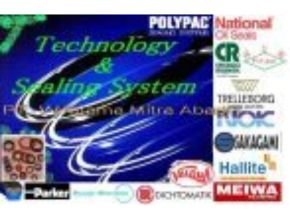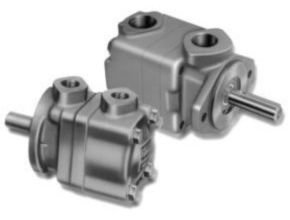Introduction
A Haskel pneumatic pump’s robust design will efficiently convert compressed air into hydraulic power, satisfying any application need for pressurizing up a component and holding it at a set pressure for any sustained period of time. Backed by a global network of high-pressure expertise, service, and support, our pneumatic pumps are consistently recognized as the most reliable in the industry. A low-cost, reliable means of generating and sustaining static medium to high-pressures.
Why Use Haskel Pneumatic Driven Pumps?
Our pumps offer many advantages over electrically driven pumps:
- Safe pneumatic operation – no heat, flame, or spark risk
- Up to 100,000 psi (7000 bar) capability
- Infinitely variable cycling speed
- Stall feature at pre-determined pressure to hold that pressure without consuming power
- Problem-free stop/start applications
- Easily automated – many modification and control options
- Suitable for most liquids and liquefied gases
- Alternative gas drive options – sour gas, natural gas, boil-off gases, nitrogen
- No need for airline lubrication – saves costs and prevents contamination
- Robust, reliable, compact, and easy to maintain proven design
- An unbalanced cycling spool provides immediate response to pressure changes
- Also available in standard, or custom-built power package configurations
- Excellent worldwide service for spares and repairs
- ATEX approved
- CE certified
Operation
The hydrostatic pumps automatically reciprocate on a differential piston principle. A large piston driven by a relatively low-pressure drive acts directly upon a smaller hydraulic piston. The nominal ratio between piston sizes is indicated in the model coding and approximates the maximum working pressure. The actual ratio is about 15% above nominal so that the pump continues to cycle when drive pressure.
equals nominal ratio. Initially, the pump will cycle at maximum speed acting as a transfer pump to pressurize downstream. It will cycle at a slower rate as the fluid meets resistance until it stalls at maximum output pressure. When a pressure drop downstream occurs, it will recycle as necessary in an effort to maintain maximum pressure. Stall pressure is achieved when the outlet pressure rises and offers more resistance to the reciprocating differential piston assembly. The piston assembly then stalls when the forces balance, e.g. when drive pressure x drive piston area equals outlet (stall) pressure x driven hydraulic plunger area.
The pump design is sensitive to very small pressure drops due to the low frictional resistance of the large-diameter drive piston and hydraulic piston seals.
Haske Air Driven Pump Products Model :
- Haskel 0,33 HP Air-Driven Pump
- 0, 75 HP Haskel Air-Driven Pump
- 2 HP Haskel Air-Driven Pump
- 2.2 HP Haskel Air Driven Pump
- 3 HP Haskel Air Driven Pump
- 6 HP Haskel Air Driven Pump
- 8 HP Haskel Air-Driven Pump
- 10 HP Haskel Air-Driven Pump
Benefit
Proven to be safe, robust, reliable, compact, and easy to maintain, Haskel pneumatic-driven liquid pumps provide a number of operational benefits:
- Safe pneumatic operation – no heat, flame, or spark risk
- Up to 100,000 psi (7000 bar) capability
- ATEX certified
- Infinitely variable cycling speed
- Stall feature at pre-determined pressure to hold that pressure without consuming power
- Problem-free stop/start applications
- Easily automated, with many modification and control options available
- Suitable for most liquids and liquefied gases
- No need for air-line lubrication, which saves costs and prevents contamination
Pressure and Flow on Demand
This guide will help you to pre-select the pump ideally suited for your application. If you have specific questions, however, we urge you to provide Haskel with the operational details of your application. We will recommend a model and any corresponding accessories.
Output Horsepower Ratings
The pumps are categorized on their horsepower ratings (see pages 6-7). These are approximate and peak at 100 psi (7 bar), assuming adequate drive, pressure, and volume. Peak horsepower is at about 75% nominal ratio x drive pressure, i.e. 100:1 pump @ 100 psi air drive peaks at 100 x 100 = 10000 x 0.75 psi = 7500 psi (517 bar) hydraulic pressure,
Double and Triple Air Head Pumps
Performance can be extended for the 1.5 hp pumps by stacking air pistons without changing the hydraulic piston. Haskel multi-head pumps consume less air than competitive single-head pumps of the same area, as only one head is pressurized on the return stroke; e.g., on a 1.5 hp pump additional heads can raise performance to 2 hp.
Double air heat pumps are identified by the last digit 2 in the pump model number. Thus, a nominal 50:1 ratio pump with two airheads is described as a 52. Similarly, a triple airhead pump is identified with a last digit 3. Thus, a 900 ratio pump with three airheads is described as a 903.
Application
Efficiently convert compressed air into hydraulic power, satisfying any application need for pressurizing up a component and holding it at a set pressure for any sustained period of time. Other applications include:
- Bolt Tensioning
- Brake Application
- Calibration
- Component flush
- Controlled force, paper mills
- Clamping
- Crimping
- Cutting
- Cylinder Testing – DOT
- Down Hole upstream pressure equalization
- Flange spreaders
- Fluid charging
- Gun turret leveling
- Hydraulic power unit
- Hydraulic Cylinder Actuation
- Isostatic Pressing
- Jacking and lifting
- LPG reclaim
- Lubricating
- Machine counterbalance
- Mechanical seal pressurization – barrier fluids
- Metal forming/Hydraulic forming
- Methanol Injection
- Oil Injection for bearing removal
- Packer inflation
- Power pressing
- Press Safety Overload
- Pressure Testing
- Proof testing components
- Silicon chip Cleaning (washing machine)
- Swaging
- Testing and operating downhole equipment
- Valve actuation
- Vehicle safety braking
- Water Jet cutting – low density
- Wellhead control
Anatomy of a Pneumatic Driven Hydrostatic Test Pump
Drive Section
The piston, complete with an “O” ring seal, operates in an epoxy-filled, fiberglass wound barrel, the diameter of which is constant throughout a given series of pumps. Drive media forces the piston down on the compression stroke and raises it on the suction stroke (M series have a spring return). The piston is pre-lubricated during assembly and therefore no air line lubricator is necessary.
Hydraulic Section/Check Valves
The drive piston is linked and connected to the hydraulic plunger/piston in the hydraulic section. Outlet flow and pressure are determined by the area of the hydraulic piston head, its nominal ratio with the drive piston head, and drive pressure.
On the down stroke, liquid in the hydraulic section is forced under compression through the outlet check valve. The fresh liquid is induced via the inlet check valve on the return stroke. These check valves control the flow of liquid through the hydraulic section. They are spring-loaded and have a very low cracking pressure, allowing maximum opening on the induction stroke. The pressure of the hydraulic fluid on the down stroke closes the inlet check valve and acts against the spring to open the outlet check valve.
Drive Cycling Valve
This pilot-operated, unbalanced, lightweight spool directs drive pressure, first to the top of the piston and then to the underside to reciprocate the piston (cycle). It actuates via pilot valves at the top and the bottom of the stroke, which causes the unbalanced spool to shift and reciprocate the piston.
Hydraulic Seal/Check Valves
This is one of the few worn parts. Its function is to allow the hydraulic piston to reciprocate without passing fluid into the drive section. The liquid, its pressure, and its temperature determine seal specification. A distance piece can be incorporated between drive and hydraulic units for complete contamination-free operation on most Haskel pumps.
Download : Catalog Haskel
Another Articles :
- Air Sampling Pump Gastec GSP 300FT
- Gastec Oxygen Galvanic Cell Sensor
- Bamo LCF3/CF4 Level Controllers and Indicators
- Calibration gas generating equipment Gastec
- Bamo CF80 Series Level Indicators and Controllers






